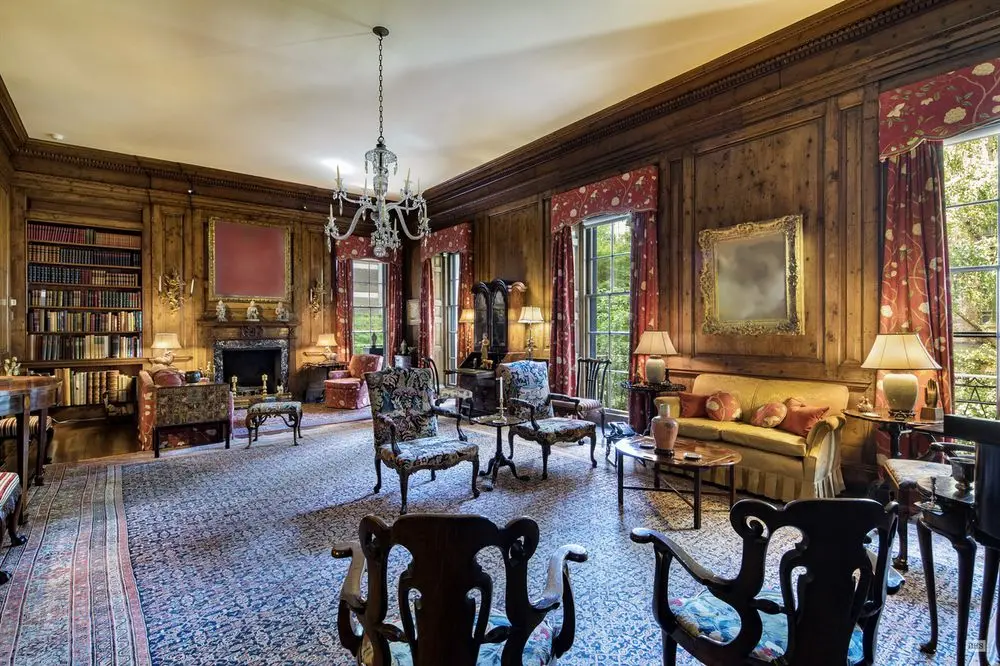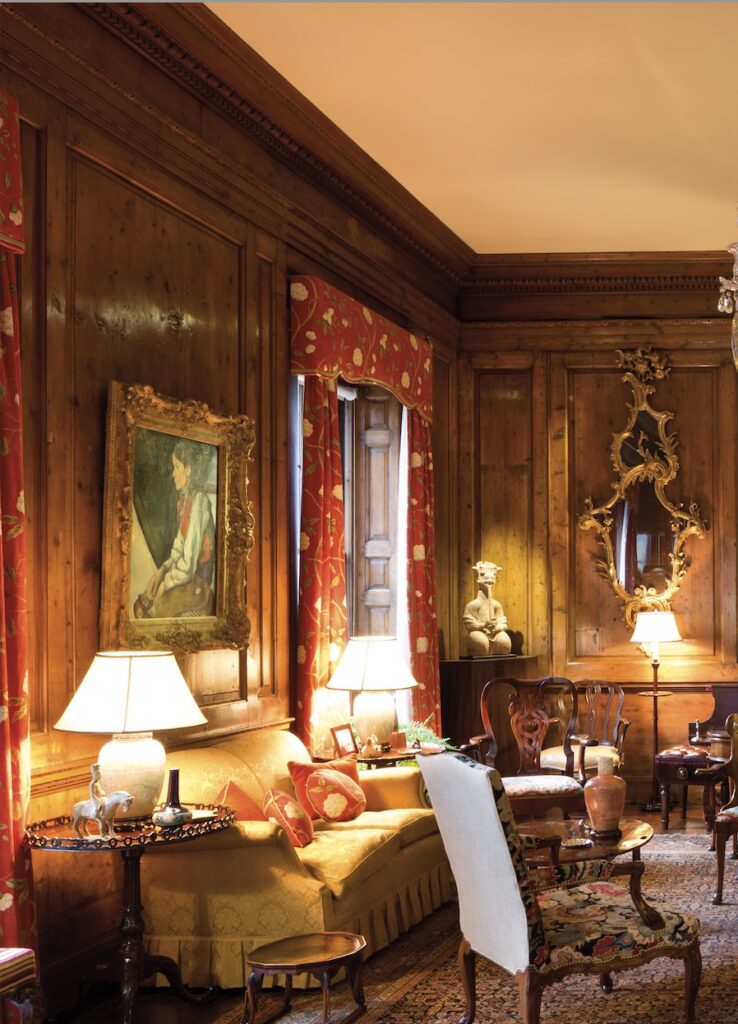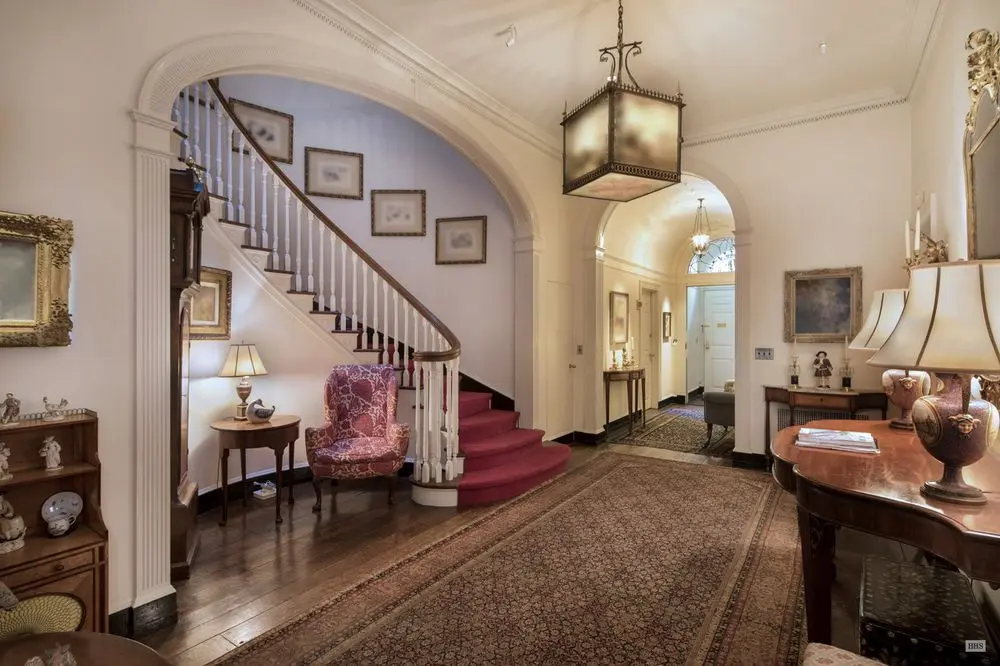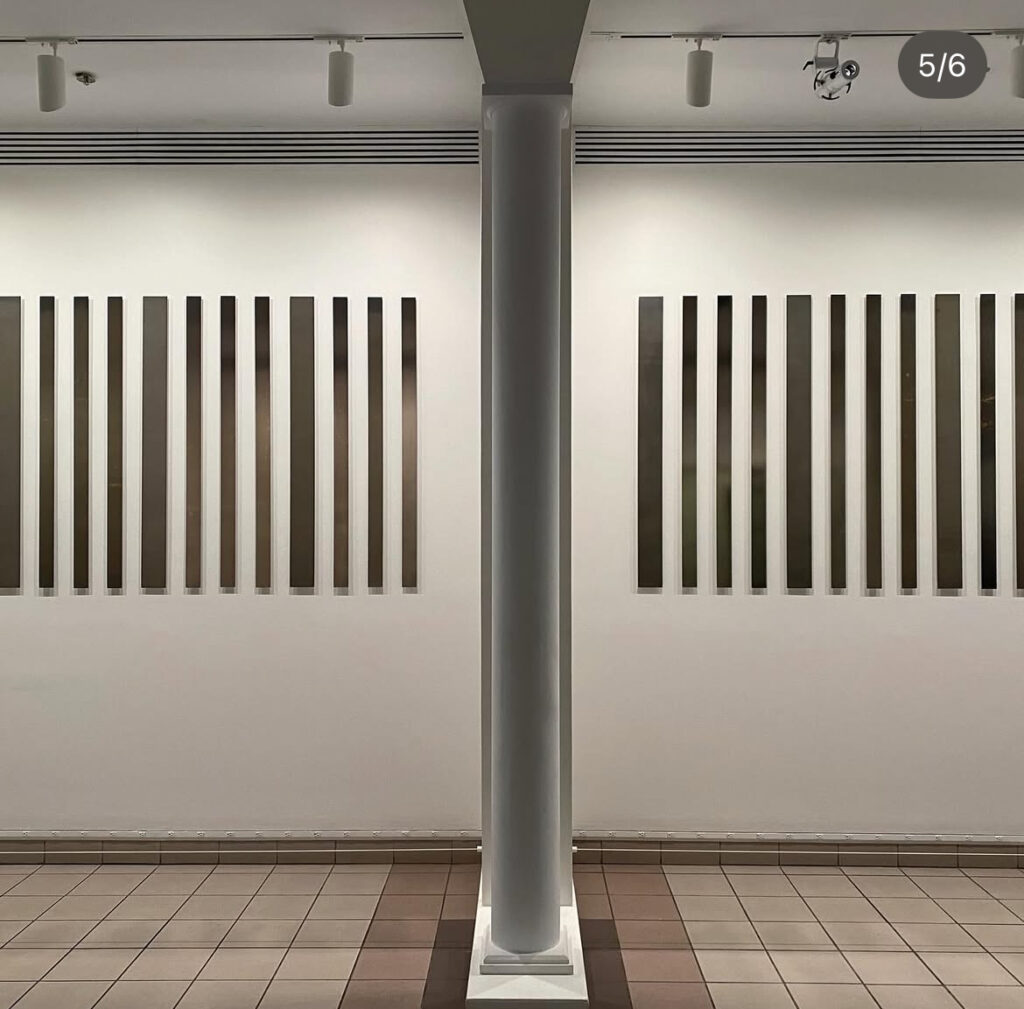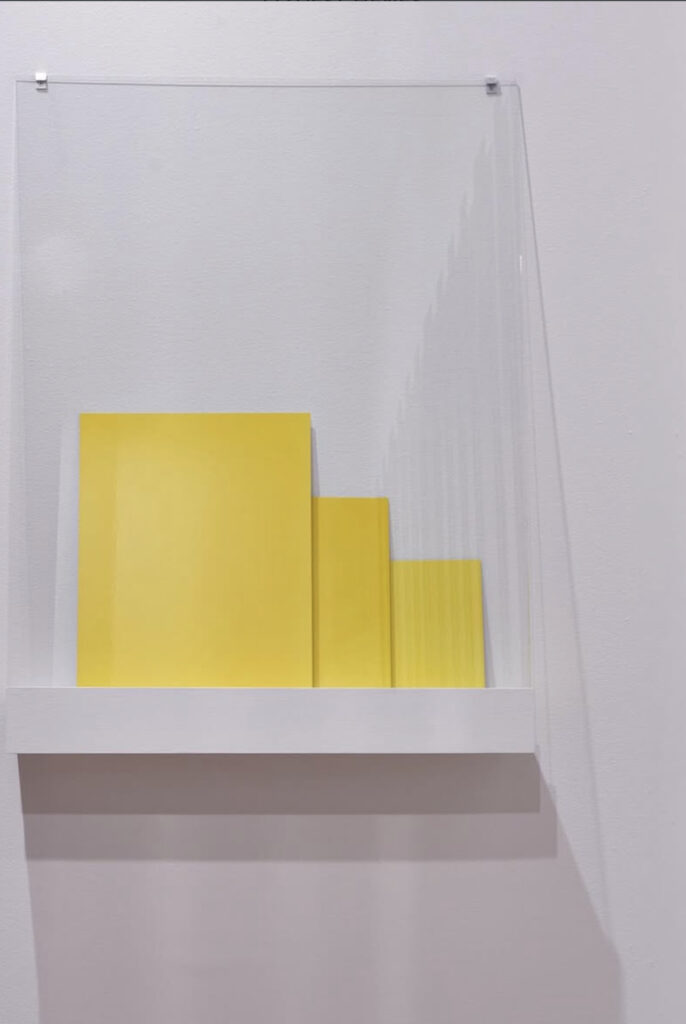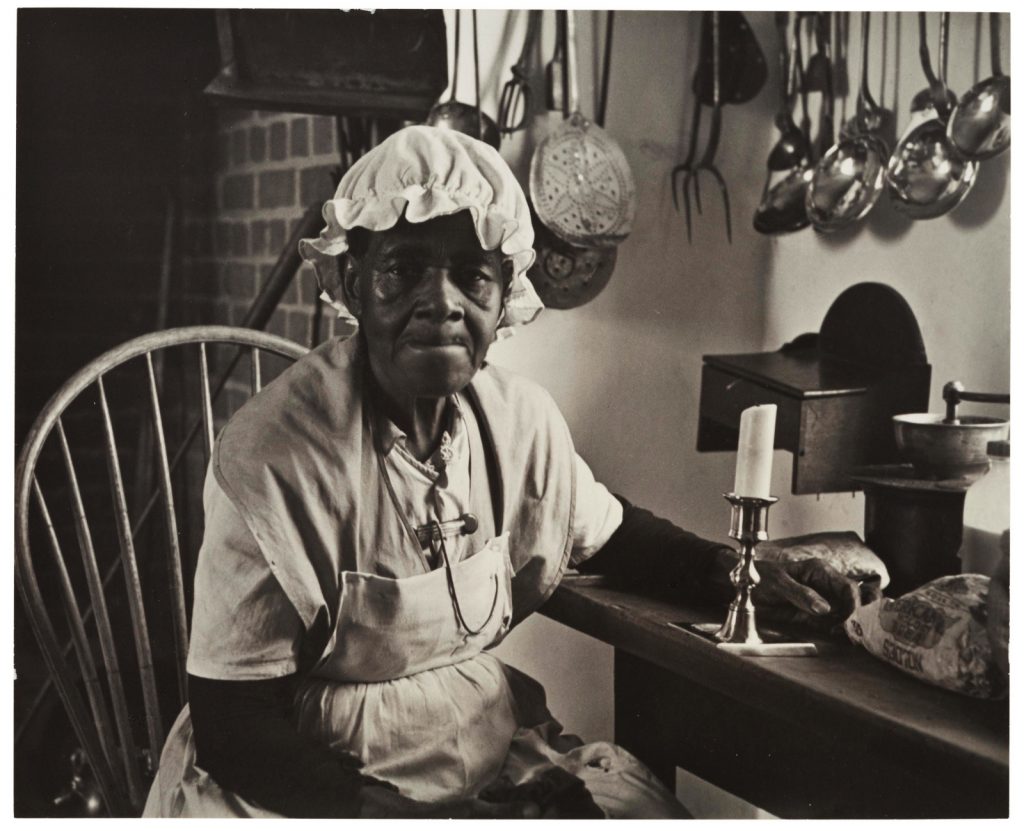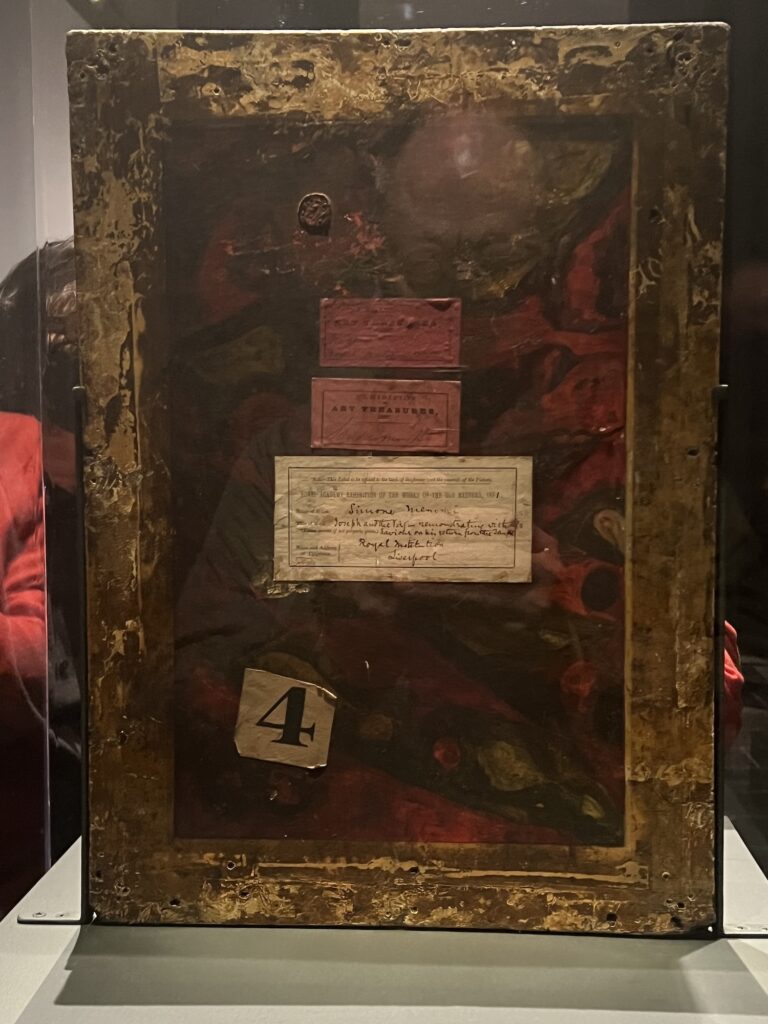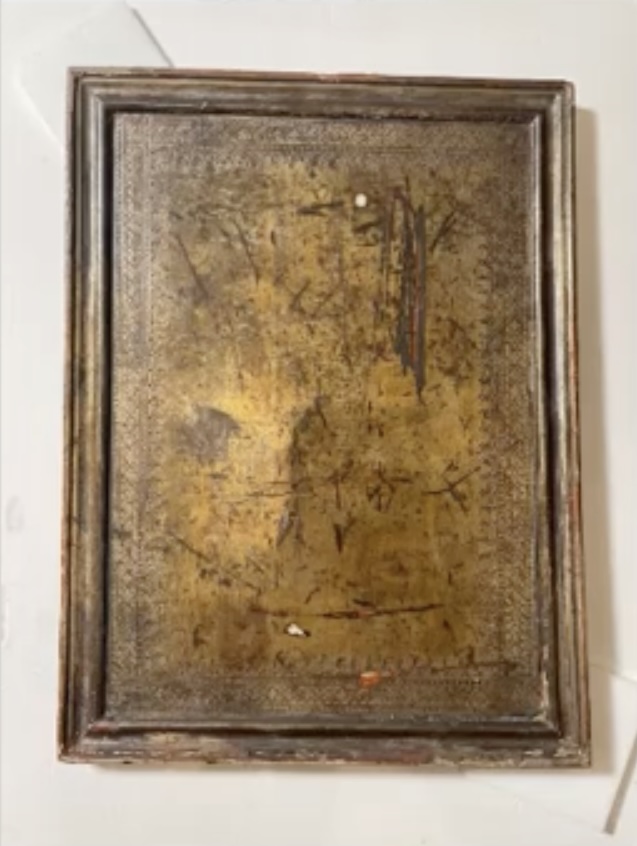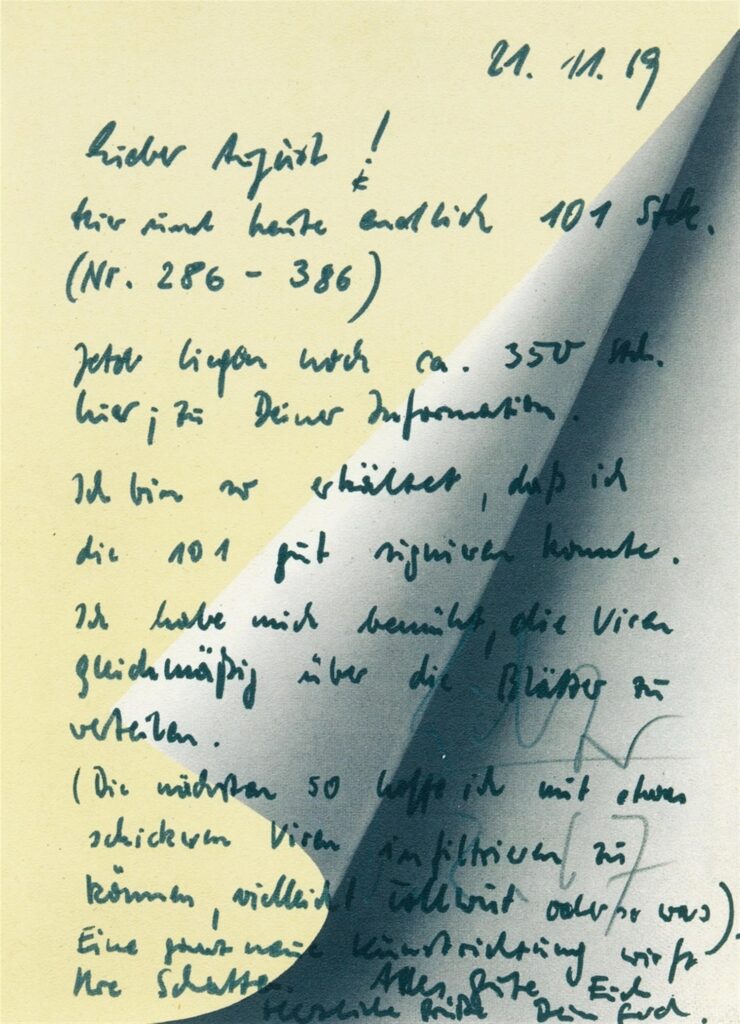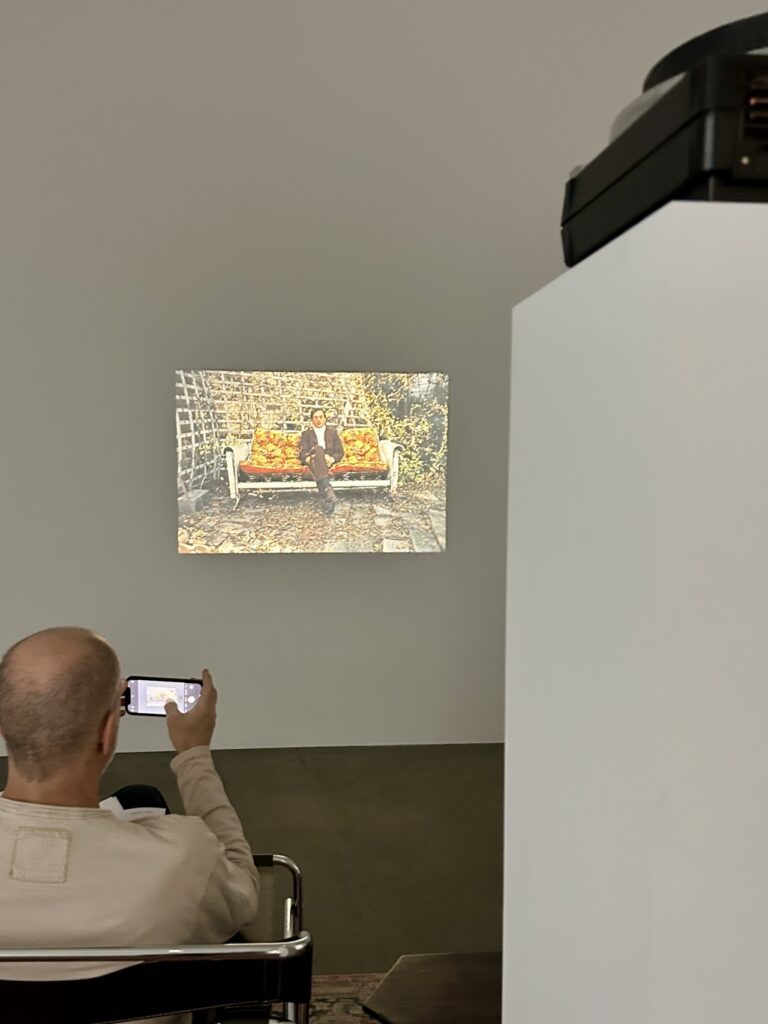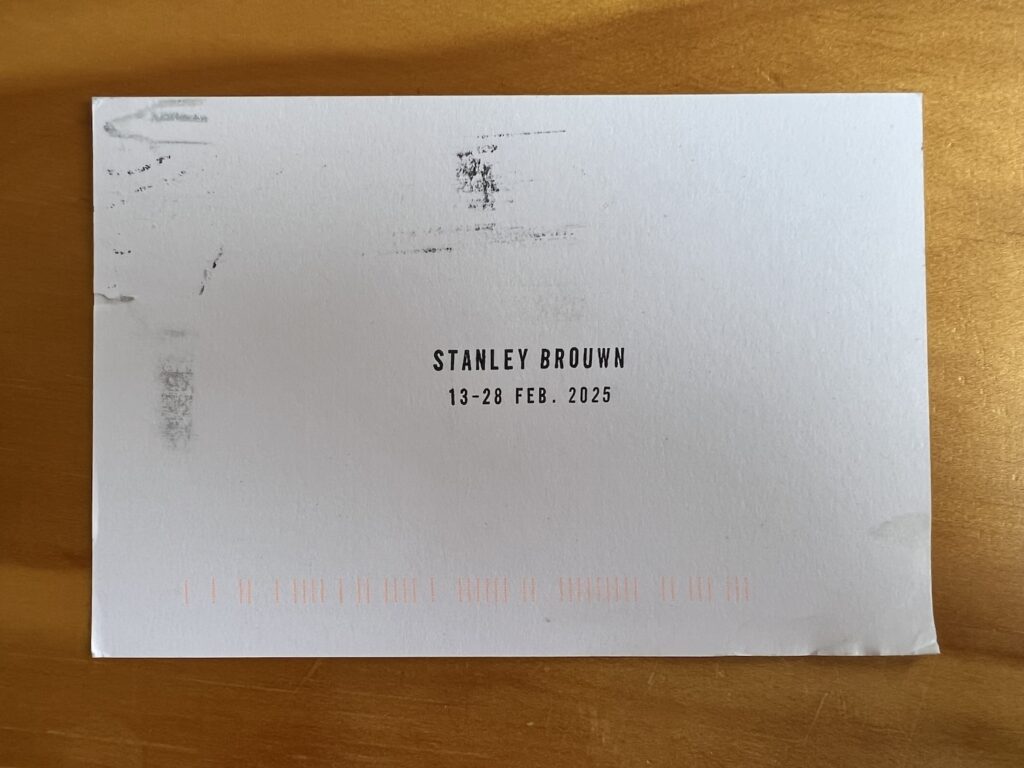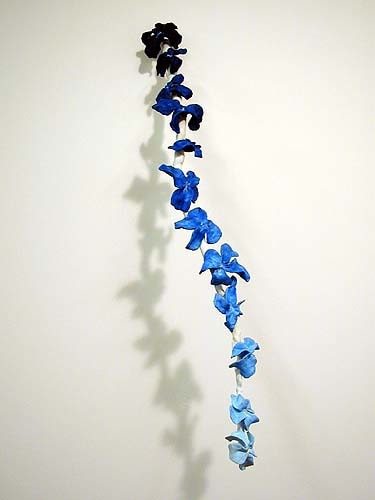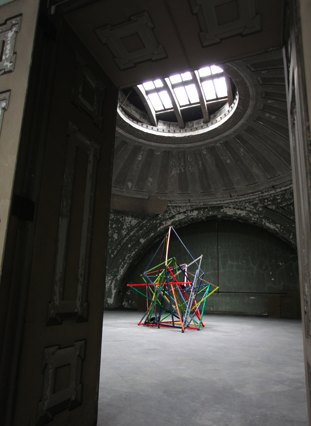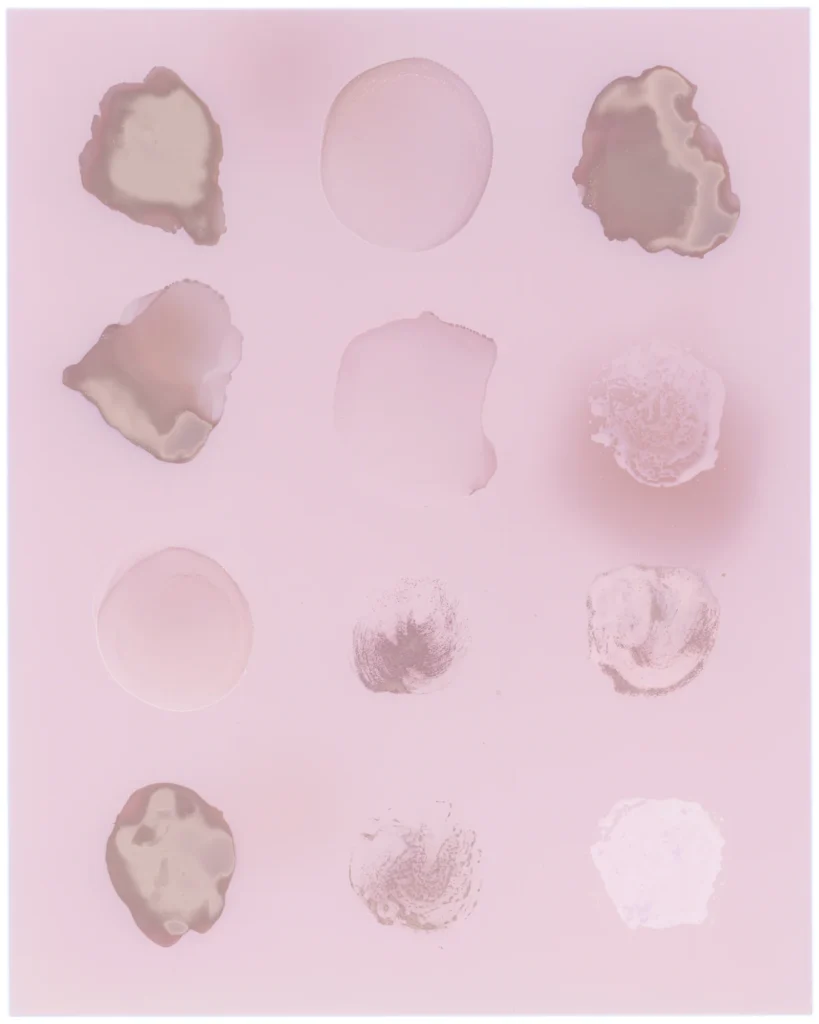
Speaking of the seeming undulations of a seemingly pliable surface, and soothingly enthralling videos about the photochemical magic of analog image production, greg.org hero and correspondent Claudio Santambrogio has been making Shadows, a cameraless series of photographs, since 2016.
Japanese paper is treated with silver gelatin, and the raking light of the sun indexes the paper’s texture, wrinkles, and undulations as an image. The process and Santambrogio’s other explorations of developer-based photography are in a peaceful video by Gudrun Thielemann on his site, The Gardener of Shadows.
Shadows makes me think of Tauba Auerbach’s crumple paintings, and Isa Genzken’s Basic Research paintings, while being fundamentally different from both. Auerbach printed a photograph of a crumpled piece of paper onto canvas, and then painted it by hand; her work marks the distance between what is seen and what it is, and the many steps it took to get there. Genzken, meanwhile, basically made monotypes by painting her floor and pressing the canvas against it. So what’s being indexed is the floor. Santambrogio’s Shadows are the paper itself. And the chemicals, and the light.
Claudio Santambrogio, Shadows [resettheapparatus]
Claudio Santambrogio’s site [csant.info]


